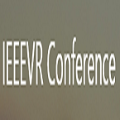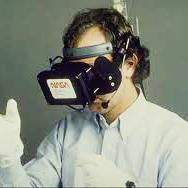Virtual reality (VR) head-mounted displays (HMD) appear to be effective research tools, which may address the problem of ecological validity in neuropsychological testing. However, their widespread implementation is hindered by VR induced symptoms and effects (VRISE) and the lack of skills in VR software development. This study offers guidelines for the development of VR software in cognitive neuroscience and neuropsychology, by describing and discussing the stages of the development of Virtual Reality Everyday Assessment Lab (VR-EAL), the first neuropsychological battery in immersive VR. Techniques for evaluating cognitive functions within a realistic storyline are discussed. The utility of various assets in Unity, software development kits, and other software are described so that cognitive scientists can overcome challenges pertinent to VRISE and the quality of the VR software. In addition, this pilot study attempts to evaluate VR-EAL in accordance with the necessary criteria for VR software for research purposes. The VR neuroscience questionnaire (VRNQ; Kourtesis et al., 2019b) was implemented to appraise the quality of the three versions of VR-EAL in terms of user experience, game mechanics, in-game assistance, and VRISE. Twenty-five participants aged between 20 and 45 years with 12-16 years of full-time education evaluated various versions of VR-EAL. The final version of VR-EAL achieved high scores in every sub-score of the VRNQ and exceeded its parsimonious cut-offs. It also appeared to have better in-game assistance and game mechanics, while its improved graphics substantially increased the quality of the user experience and almost eradicated VRISE. The results substantially support the feasibility of the development of effective VR research and clinical software without the presence of VRISE during a 60-minute VR session.
翻译:虚拟现实(VR)的头部显示器(VR)似乎是有效的研究工具,可以解决神经心理测试中的生态有效性问题;然而,由于VR诱发的症状和影响(VRISE)以及VR软件开发缺乏技能,这些工具的广泛实施受到VR诱发的症状和影响(VRISE)以及VR软件开发过程中缺乏技能的阻碍。这项研究为在认知神经科学和神经心理学方面开发VR软件提供了指导方针,通过描述和讨论虚拟现实每天评估实验室(VR-EL)的开发阶段,这是在浸泡VR(VR-E)的第一个神经心理学电池。 在现实故事线上评估认知功能的技术(VR-E),这些技术得到了广泛的应用。 联合、软件开发工具包和其他软件的各种资产的效用,使得认知科学家能够克服VRISE和VR软件质量的挑战。此外,通过VR-R-R(VR-R-R)软件的最终支持, VRR-R-Syal-Syal-Syal-al-Seral-Syal-Seral-Seral-Syal-Seral-Syal-Syal-Syal-Syal-Syal-Syal-Syal-Syal-Syal-Syal-Syal-inal-Syal-inal-Sy-S-S-S-inal-inal-inal-s-inal-inal-inal-inal-inal-inal-inal-inal-inal-inal-inal-inal-in-in-in-in-in-in-in-in-in-in-in-in-in-in-in-in-in-in-inal-in-in-in-in-in-in-in-in-inal-in-in-inal-in-in-in-in-inal-inal-inal-inal-inal-inal-inal-inal-inal-in-in和12-in-in-in-in-in-in-in-in-in-in-inal-inal-in-in-in-in-inal-inal-in-in-




